In the fast-paced urban life, street food, with its convenience, diversity, and vibrant atmosphere, has become a popular dining option for consumers worldwide. Street food trailer, as the core vehicle of this culture, are becoming the preferred tool for entrepreneurs, restaurant brands, and event planners due to their flexibility, low cost, and high return on investment.
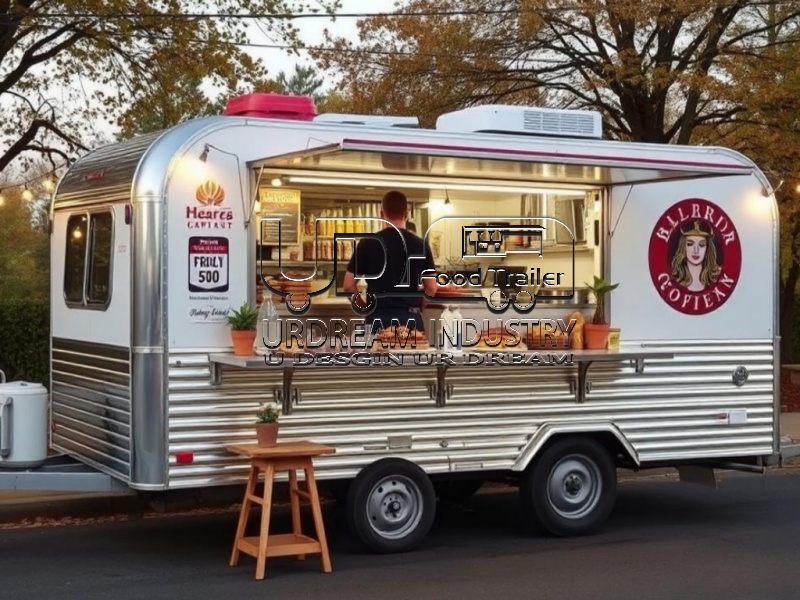
Key Features
1. High Mobility, Low-Cost Operation
- Lightweight Design: Constructed from aluminum alloy or fiberglass, lightweight and corrosion-resistant, reducing transportation costs.
- Towable Structure: Can be towed by ordinary vehicles, eliminating the need for dedicated trucks and adapting to narrow urban roads.
- Rapid Deployment: From parking to opening for business takes only 10-15 minutes, suitable for high-frequency scene switching.
- Case Study: A pizza truck in London achieved a monthly net profit of £8,000 through a rotating model of “weekday office buildings + weekend market,” far exceeding traditional brick-and-mortar stores.
2. Modular Space, Flexible Function Expansion
Customizable Layout: Equipment configuration can be adjusted according to the type of food, such as frying, grilling, and cold drink areas.
Multi-Window Design: Supports serving multiple customers simultaneously, improving food preparation efficiency.
Extended Functionality: Some trucks are equipped with awnings, outdoor seating, or digital ordering screens to enhance the customer experience.
3. High-Efficiency Equipment, Ensuring High-Quality Food
- Commercial-Grade Kitchen Equipment: Such as twin-cylinder fryers, flatbed grills, and multi-functional steam ovens, meeting diverse menu needs.
- Intelligent Temperature Control System: Ensures precise control of food storage and cooking temperatures, meeting food safety standards.
- Energy-Saving and Environmentally Friendly Technology: Employs LED lighting, solar power, and waste oil recycling devices to reduce operating costs.
4. Branded Appearance, Enhancing Marketing Impact
- Customized Coating: Conveys the brand story through colors, patterns, and slogans to attract the target customer group.
- Social Media Interaction: Integrates Wi-Fi, charging ports, and photo-taking areas to encourage customers to share spontaneously.
- Lighting Design: Uses neon lights or LED light strips during nighttime operations to create ambiance and enhance brand visibility.
5. Compliance and Safety
- Hygiene Certification: Complies with HACCP or local food safety regulations, equipped with disinfection equipment and fly/dust control devices.
- Fire Protection System: Installs gas alarms, fire extinguishers, and ventilation systems to reduce safety hazards.
- Licensing Convenience: Compared to physical stores, food trucks have a simpler licensing process in some areas.
Internal Equipment
1. Core Cooking Equipment
- Fryer/Grill: Used for making fries, fried chicken, churros, etc., supporting multi-temperature zone control.
- Grill/Steam Grill: Suitable for hamburgers, hot dogs, grilled meats, etc., equipped with a smoke extraction system.
- Steam Oven/Microwave Oven: Quickly heats or cooks staple foods such as pizza, rice, and bread.
- Cold Drink Machines: Includes ice cream machines, cold-pressed juicers, or carbonated beverage machines to meet summer needs.
2. Food Storage and Processing
- Refrigerated/Frozen Cabinets: 4℃-18℃ zoned storage to extend the shelf life of food.
- Stainless Steel Worktop: Non-slip surface and drainage design for easy cleaning and food preparation.
- Dishwashing Sink: Integrated hot water supply and waste sorting device, meeting hygiene requirements.
3. Ordering and Payment System
- Digital Ordering Screen: Supports touch-screen ordering, reducing errors from human communication.
- Mobile POS Machine: Compatible with credit cards and mobile payments (such as Apple Pay and Alipay).
- POS Printer: Automatically generates receipts for easy inventory management and customer retention.
4. Safety and Environmental Protection Devices
- Gas Alarm: Monitors combustible gas concentration in real time and automatically shuts off gas supply if levels exceed limits.
- Waste Oil Recycling Bin: Sealed design prevents leaks and complies with environmental regulations.
- Fire Extinguisher: Dry powder or carbon dioxide fire extinguishers for handling sudden fires.
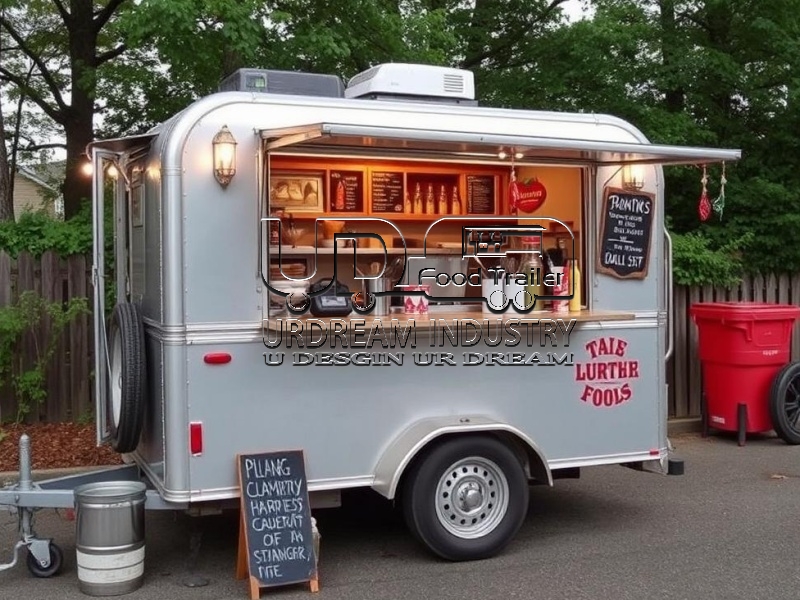
Application Areas
1. Street Economy and Night Markets
- Scenarios: Urban pedestrian streets, night markets, squares, etc.
- Advantages: Low-cost market testing and rapid customer acquisition.
- Case Study: Bangkok’s “Train Night Market” in Thailand features hundreds of food carts offering a variety of specialties, from mango sticky rice to volcano ribs, attracting over ten million tourists annually.
2. Music Festivals and Large-Scale Events
- Scenarios: Music festivals, sporting events, exhibitions, etc.
- Advantages: Flexible deployment to meet concentrated demand during peak periods.
- Case Study: During the Coachella music festival in the US, food trucks served over 20,000 attendees daily, generating over $10,000 in revenue per day.
3. Commercial Complexes and Office Buildings
- Scenarios: Shopping mall atriums, office building complexes, university campuses, etc.
- Advantages: Attracting a stable customer base through “pop-up stores” reduces rental costs.
- Case Study: After introducing a cluster of food trucks, a shopping mall in Shanghai saw a 15% increase in foot traffic, boosting sales for surrounding businesses.
4. Brand Collaborations and Cross-Industry Marketing
- Scenarios: Collaborating with coffee and beer brands or IPs to launch limited-edition products.
- Advantages: Piloting new flavors through food trucks, testing market feedback before rolling them out to physical stores.
- Case Study: Starbucks collaborated with a well-known food truck to launch a “cold brew coffee + donut” combo, generating significant social media buzz.
5. Tourism and Cultural Experiences
- Scenarios: Tourist attractions, historical and cultural districts, etc.
- Advantages: Combining local culinary specialties to create an immersive cultural experience.
- Case study: A food truck in Florence, Italy, serving traditional T-bone steak has become a must-visit attraction for tourists.

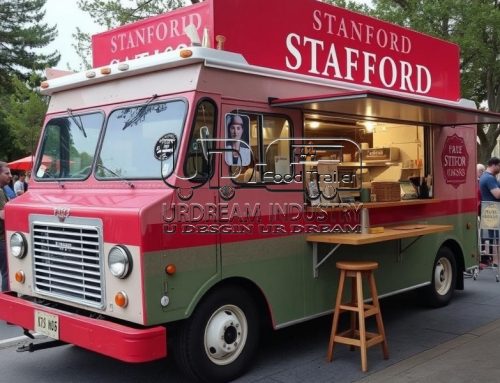
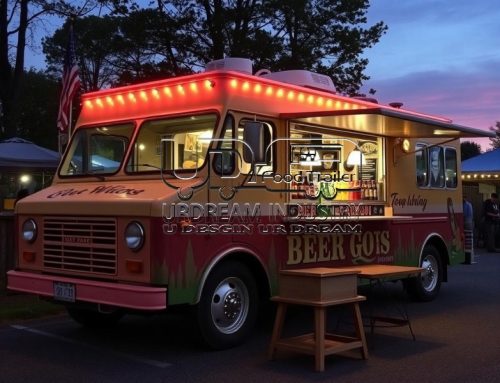

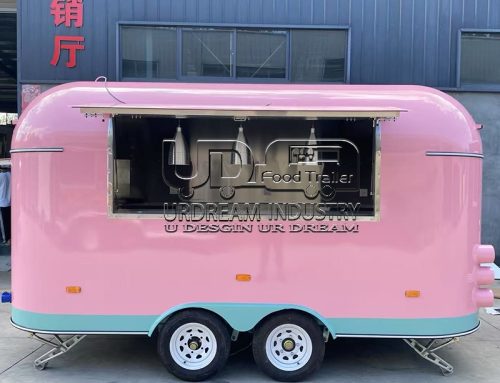

Leave A Comment